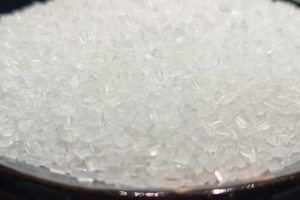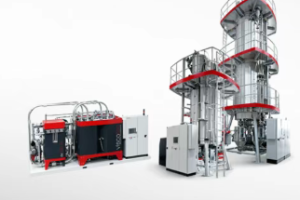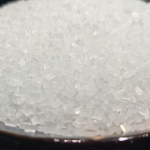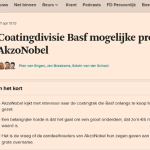April 27, 2025 – As a crucial foundational material in the industrial sector, carbon black plays an indispensable role across numerous industries, and its industry dynamics have always been a focus of attention. Currently, the carbon black industry is evolving in a complex landscape, presenting both new opportunities and a series of challenges.
The market demand for carbon black is a major driving force shaping its development. The rubber industry, as the largest application area of carbon black, directly influences its market trends. With the steady expansion of the global automotive industry, especially the continuous increase in vehicle ownership in emerging market countries, the demand for tires has surged, injecting strong impetus into the carbon black market. Meanwhile, the stable growth of industries such as plastics, coatings, and inks has also contributed to the rising demand for carbon black. According to statistics from the Carbon Black Branch of the China Rubber Industry Association, the annual output of carbon black reached 6.26 million tons in 2023, a year – on – year increase of 5.20%. In the first half of 2024, member enterprises in the carbon black industry completed a production volume of 2.78 million tons, representing a 6.58% year – on – year growth, indicating an upward trend in market demand.
Technological innovation in production is a significant driver propelling the carbon black industry forward. In the highly competitive market environment, companies are increasing their investment in research and development, aiming to enhance product quality and performance while reducing production costs through technological advancements. For instance, some enterprises adopt advanced reactor designs and automated control systems to optimize production processes. This not only improves the production efficiency of carbon black but also precisely controls the product’s microstructure, resulting in carbon black with superior performance in key indicators such as particle size distribution and structure degree, better meeting the stringent requirements of high – end downstream customers.
However, the increasingly stringent environmental requirements have become a major concern for carbon black enterprises. The production of carbon black generates pollutants such as waste gas, wastewater, and waste residue, posing environmental pressures. Against the backdrop of global sustainable development, governments around the world have introduced stricter environmental regulations and standards. To comply with these trends, carbon black companies have to invest heavily in the construction and upgrading of environmental protection facilities and the development of green production processes. Some enterprises have introduced advanced waste gas treatment technologies, such as adsorption and combustion methods, to significantly reduce pollutant emissions in waste gas. Others are focusing on building wastewater recycling systems to improve water resource utilization and minimize wastewater discharge.
According to AsiaMB, the global carbon black market is witnessing a growing concentration. Large – scale carbon black producers, leveraging their financial, technological, brand, and scale advantages, have gained a significant market share. International giants like Cabot and Birla Carbon have strengthened their market positions by globally distributing production bases and sales networks, optimizing resource allocation worldwide. Domestic enterprises such as Black Cat Carbon Black and Longxing Chemical also possess strong competitiveness in the domestic market. They are actively participating in international competition by continuously improving product quality and expanding product lines.

Looking ahead, the development trends of the carbon black industry are becoming clear. High – performance products will be one of the core development directions. With the rapid rise of emerging industries such as 5G communication, new energy vehicles, and high – end electronic devices, more stringent requirements are imposed on the performance of carbon black. For example, in the lithium – ion battery field of new energy vehicles, carbon black with high conductivity and dispersibility is required as a conductive agent to enhance battery charging and discharging performance and service life. In the rubber industry, the development of high – performance carbon black reinforcing agents is urgently needed to meet the requirements of tires for low rolling resistance, high wear resistance, and safety.
Green production will become an inevitable choice for the industry. Guided by the “dual – carbon” goals, carbon black enterprises will continue to increase investment in energy conservation, emission reduction, and resource recycling. On one hand, they will develop carbon black production technologies using renewable resources as raw materials to reduce dependence on traditional fossil raw materials. On the other hand, they will optimize production processes to improve energy efficiency and reduce greenhouse gas emissions. Some enterprises are experimenting with using biomass waste and waste tires as raw materials for carbon black production, achieving both waste resource utilization and carbon emission reduction.
Intelligent manufacturing will also empower the development of the carbon black industry. By leveraging advanced technologies such as big data, artificial intelligence, and the Internet of Things, enterprises can achieve precise control and optimized management of the production process. Through real – time data collection and analysis, production parameters can be adjusted promptly to ensure product quality stability. Automated equipment and robots can enhance production efficiency, reduce labor costs, and minimize human – induced interference in production.
Industry consolidation and restructuring are expected to intensify further. With the increasing market competition and environmental pressure, small and medium – sized enterprises face growing survival challenges. Large enterprises can integrate resources through mergers, acquisitions, and cooperation to achieve complementary advantages, increase industry concentration, optimize industrial layout, and enhance overall industry competitiveness.
Despite the broad prospects, the carbon black industry also faces many challenges. The drastic fluctuations in raw material prices pose great difficulties for enterprises in cost control. The main raw materials for carbon black production, such as coal tar and anthracene oil, are affected by multiple factors, including the international crude oil market, coal market, and supply – demand relationships, resulting in frequent and significant price fluctuations. When raw material prices rise, production costs increase substantially, squeezing profit margins. Conversely, rapid price declines can lead to a decrease in inventory value, also affecting corporate economic benefits.
The continuous increase in environmental pressure requires enterprises to constantly invest in the upgrading of environmental protection facilities and the research and innovation of environmental protection technologies to meet stricter environmental standards. This undoubtedly increases operating costs, and for some small – scale and financially – weak enterprises, it may even threaten their survival.
Market competition is becoming increasingly fierce, and the problem of product homogenization is severe. Many enterprises’ products have little difference in performance and quality, and they mainly compete for market share through price wars, which not only reduces profit margins but also hinders the healthy and sustainable development of the industry. To stand out in the competition, enterprises must strengthen technological innovation, develop differentiated products, and enhance brand awareness and reputation.
Insufficient investment in technological research and development is also a significant factor restricting industry development. Achieving the goals of high – performance, green, and intelligent development requires continuous and substantial investment in R & D. However, due to limited funds and insufficient emphasis on technological innovation, some enterprises have relatively scarce R & D investment, resulting in insufficient technological innovation capabilities and difficulty in keeping up with industry development.
The carbon black industry is at a critical juncture of transformation and development. Enterprises need to actively seize market opportunities, increase investment in technological innovation and environmental protection, enhance product competitiveness, and optimize industrial layout through resource integration to address the many challenges in the development process and achieve sustainable development.














